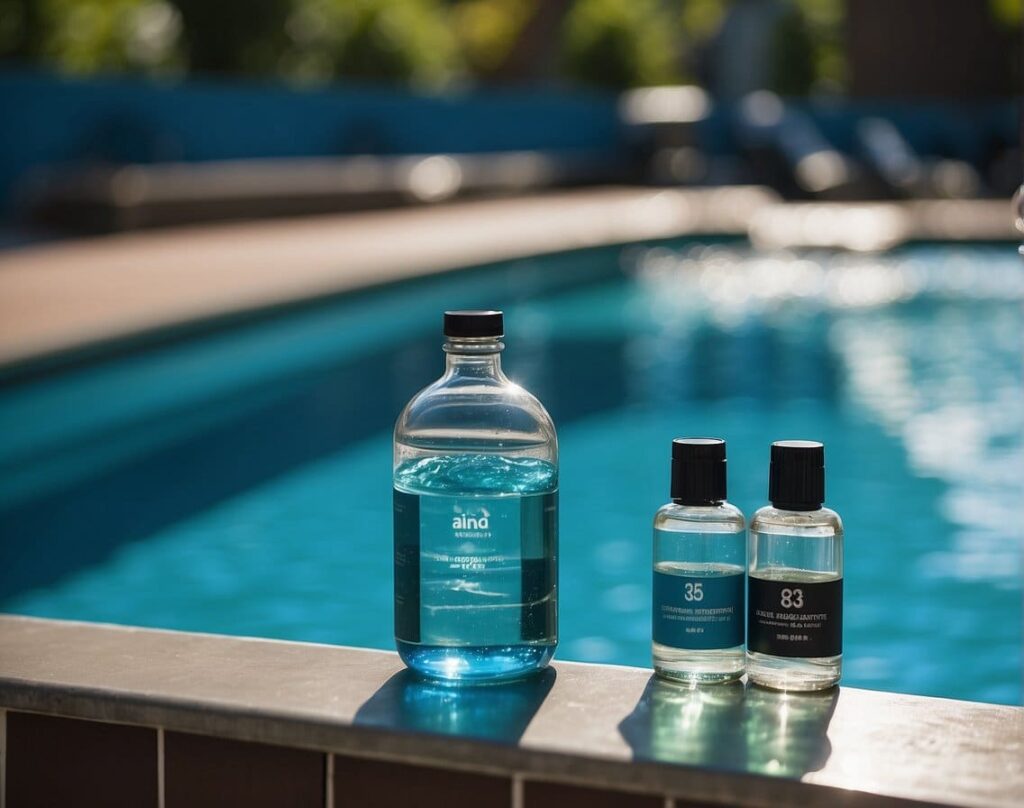Understanding the Basics of Pool Chemistry Managing the chemical balance of your swimming pool is crucial for ensuring safety and clarity. Proper pool maintenance prevents the buildup of harmful bacteria and algae, and safeguards against pool equipment damage. To maintain a healthy pool environment, several key chemicals must be regularly monitored and adjusted.
Chlorine: The Primary Disinfectant Chlorine is the most common chemical used to sanitize pools, effectively killing bacteria, algae, and microorganisms. It is available in various forms:
- Tablets and sticks: Slow-dissolving and convenient for ongoing maintenance.
- Granules: Fast-acting and ideal for shock treatments.
- Liquid chlorine: Suitable for large pools or commercial use due to its rapid dispersion.
The ideal chlorine level should be maintained between 1-3 parts per million (ppm) to ensure optimal disinfection without irritating swimmers’ skin and eyes.
pH Levels: Ensuring Comfort and Effectiveness
The pH level of your pool water affects both the effectiveness of chlorine and the comfort of swimmers. A pH range of 7.4 to 7.6 is ideal. High pH levels can lead to cloudy water and scale formation, while low pH can corrode pool equipment and irritate skin and eyes.
Alkalinity: The pH Buffer
Total alkalinity acts as a buffer for pH, helping to stabilize the water’s acidity levels. Maintaining total alkalinity between 80-120 ppm is essential for preventing dramatic pH swings which can affect both water clarity and chemical effectiveness.
Calcium Hardness: Protecting Pool Surfaces
Calcium hardness refers to the amount of dissolved calcium in the pool water. Levels between 200-400 ppm are ideal. Too much calcium leads to scale formation on pool surfaces and equipment, whereas too little can cause plaster finishes to deteriorate.
Stabilizer (Cyanuric Acid): Protecting Chlorine from the Sun
Cyanuric acid is used in outdoor pools to stabilize chlorine and prevent it from degrading under the sun’s UV rays. An ideal stabilizer level is between 30-50 ppm. Overuse can reduce chlorine’s effectiveness, necessitating partial water replacement to lower cyanuric acid levels.
Shock Treatments: Restoring Pool Clarity
Regular shock treatments are necessary to eliminate chloramines, which are by-products of chlorine disinfection that cause eye irritation and a strong chlorine odor. Shocking the pool involves adding a large dose of chlorine (or a non-chlorine substitute) to break down these by-products, restoring clarity and effectiveness to the water.
Algaecides: Preventing Algal Blooms
Algaecides are used as a preventative measure to inhibit the growth of algae, which can cause slippery surfaces and cloud the water. Copper-based algaecides are effective but can stain pool surfaces if not used correctly. Quaternary ammonia products provide a non-staining alternative.
Maintaining Safety and Compliance
Safety in chemical handling is paramount. Always follow the manufacturer’s instructions for application and storage of pool chemicals to avoid accidents. Proper chemical storage is also essential to prevent reactions between different chemicals and to extend their shelf life.
Regular Testing: Key to Balanced Pool Chemistry
Regular testing with reliable test kits is essential for maintaining balanced water chemistry. Test your pool water at least twice a week for residential pools and daily for public pools. This helps in making prompt adjustments to the chemical levels, ensuring a safe and inviting swimming environment.
Conclusion
Maintaining the chemical balance of your pool is not only essential for the health and safety of its users but also extends the longevity of the pool itself. Regular attention to the key elements of pool chemistry will ensure that your pool remains a refreshing and enjoyable environment all year round.


